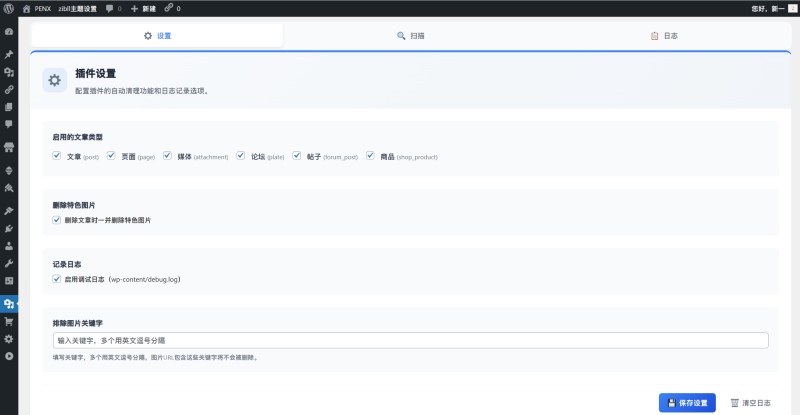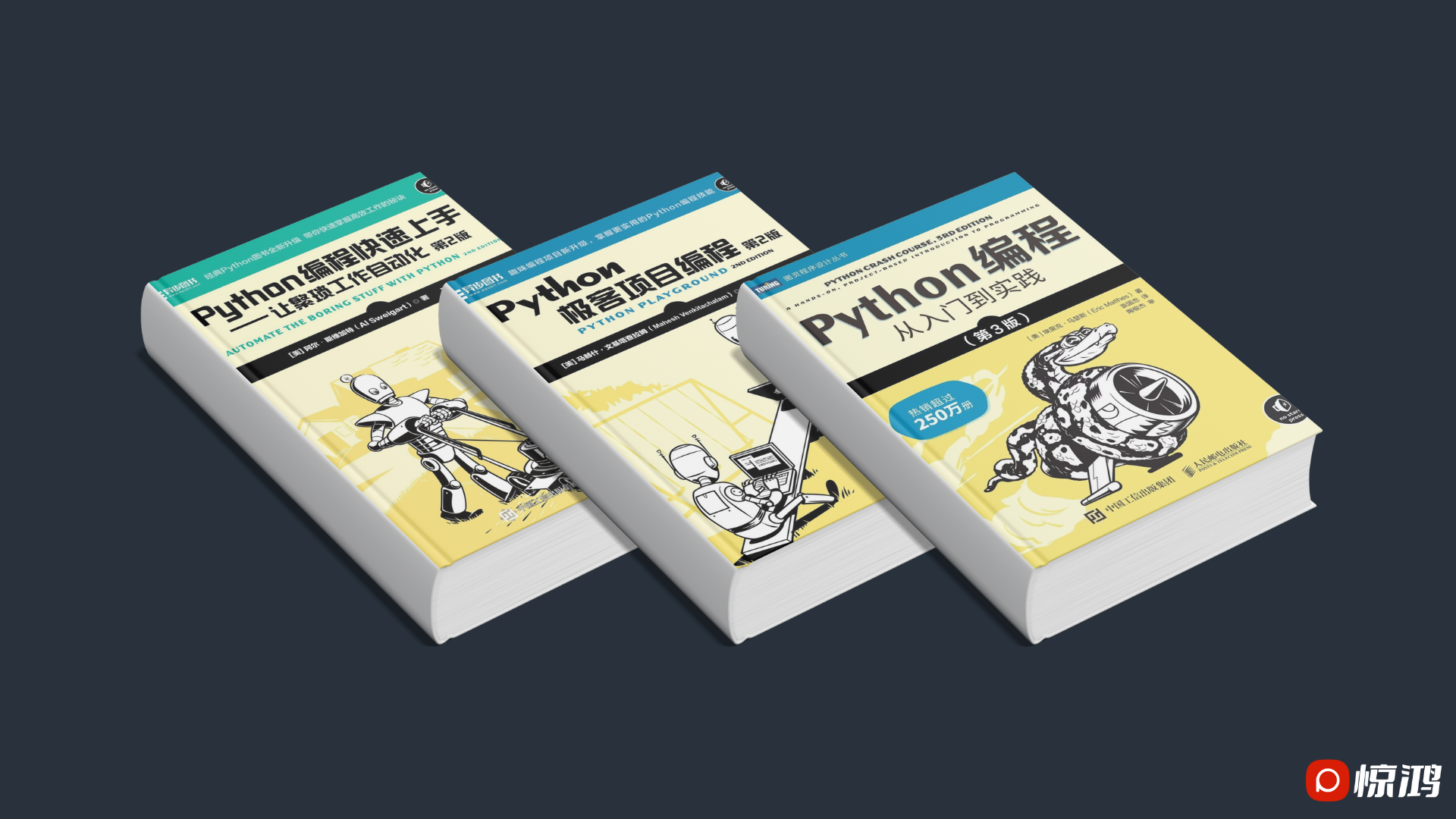目录
概述
B2 子主题(b2child)是基于 B2 主题的子主题,内置了 Xun Framework 选项框架。它允许开发者在不需要修改父主题核心代码的前提下,实现主题的定制和扩展。
主要特性
- 完整的选项框架:内置 Xun Framework,提供 23 种字段类型
- 模块化设计:清晰的目录结构,便于维护和扩展
- 前端集成:自动输出自定义 CSS/JS 到前端
- 多语言支持:支持 WordPress 国际化
- 性能优化:轻量级框架,不影响主题性能
目录结构
wp-content/themes/b2child/
├── functions.php # 子主题主入口文件
├── style.css # 子主题样式文件
├── child.js # 子主题脚本文件
├── 说明.txt # 简要说明文档
├── README.md # 开发文档(MDX版本)
├── README.mdx # 开发文档(MDX版本)
├── B2子主题开发文档.md # 本文档
└── framework/ # Xun Framework框架目录
├── xun-framework.php # 框架入口文件
├── classes/ # 框架核心类
│ ├── setup.class.php # 初始化类
│ ├── admin-options.class.php # 后台选项页类
│ ├── fields.class.php # 字段基类
│ └── icons.class.php # 图标管理类
├── functions/ # 辅助函数
│ ├── helpers.php # 通用工具函数
│ ├── sanitize.php # 数据清理函数
│ └── validate.php # 数据验证函数
├── fields/ # 字段类型实现
│ ├── text/ # 文本字段
│ ├── textarea/ # 文本域字段
│ ├── switch/ # 开关字段
│ ├── select/ # 选择字段
│ ├── number/ # 数字字段
│ ├── color/ # 颜色字段
│ ├── media/ # 媒体字段
│ ├── gallery/ # 画廊字段
│ ├── radio/ # 单选字段
│ ├── checkbox/ # 多选字段
│ ├── palette/ # 色板字段
│ ├── slider/ # 滑块字段
│ ├── sortable/ # 排序字段
│ ├── sorter/ # 分类器字段
│ ├── background/ # 背景字段
│ ├── border/ # 边框字段
│ ├── icon/ # 图标字段
│ ├── date/ # 日期字段
│ ├── code/ # 代码字段
│ ├── button/ # 按钮字段
│ └── accordion/ # 折叠组字段
└── assets/ # 后台UI资源
├── css/ # 样式文件
├── js/ # 脚本文件
└── fields/ # 字段专用脚本框架架构
核心组件
1. 初始化系统
- 文件:
framework/classes/setup.class.php - 功能: 框架初始化、常量定义、资源加载、钩子注册
- 关键方法:
init(): 框架初始化load_classes(): 加载核心类enqueue_assets(): 加载资源文件
2. 选项管理
- 文件:
framework/classes/admin-options.class.php - 功能: 后台选项页面管理、表单渲染、数据保存
- 关键方法:
create_options_page(): 创建选项页面render_sections(): 渲染设置分区save_options(): 保存选项数据
3. 字段系统
- 文件:
framework/classes/fields.class.php - 功能: 字段工厂、统一渲染、数据验证
- 关键方法:
render_field(): 渲染字段sanitize_value(): 清理数据validate_value(): 验证数据
4. 图标系统
- 文件:
framework/classes/icons.class.php - 功能: 图标注册、检索、渲染
- 支持: Heroicons 图标库
字段类型详解
基础字段
1. 文本字段 (text)
array(
'id' => 'site_title',
'type' => 'text',
'title' => '站点标题',
'placeholder' => '请输入站点标题',
'default' => '',
'attributes' => array(
'maxlength' => 100,
'required' => true
)
)属性说明:
id: 字段唯一标识符type: 字段类型title: 字段标题placeholder: 占位符文本default: 默认值attributes: HTML 属性
2. 文本域字段 (textarea)
array(
'id' => 'site_description',
'type' => 'textarea',
'title' => '站点描述',
'placeholder' => '请输入站点描述...',
'default' => '',
'attributes' => array(
'rows' => 4,
'cols' => 50
)
)3. 开关字段 (switch)
array(
'id' => 'enable_feature',
'type' => 'switch',
'title' => '启用功能',
'default' => true,
'on_text' => '开启',
'off_text' => '关闭'
)选择字段
4. 下拉选择 (select)
array(
'id' => 'layout_style',
'type' => 'select',
'title' => '布局风格',
'options' => array(
'default' => '默认',
'wide' => '通栏',
'boxed' => '居中盒装'
),
'default' => 'default'
)5. 单选字段 (radio)
array(
'id' => 'display_mode',
'type' => 'radio',
'title' => '展示模式',
'options' => array(
'list' => '列表',
'grid' => '网格',
'masonry' => '瀑布流'
),
'default' => 'list'
)6. 多选字段 (checkbox)
array(
'id' => 'enabled_modules',
'type' => 'checkbox',
'title' => '启用模块',
'options' => array(
'banner' => '横幅',
'sidebar' => '侧边栏',
'footer' => '页脚工具区'
),
'default' => array('banner', 'sidebar')
)媒体字段
7. 媒体字段 (media)
array(
'id' => 'logo',
'type' => 'media',
'title' => '站点Logo',
'library' => 'image',
'default' => '',
'attributes' => array(
'accept' => 'image/*'
)
)8. 画廊字段 (gallery)
array(
'id' => 'homepage_gallery',
'type' => 'gallery',
'title' => '首页画廊',
'default' => array(),
'attributes' => array(
'multiple' => true
)
)样式字段
9. 颜色字段 (color)
array(
'id' => 'primary_color',
'type' => 'color',
'title' => '主题主色',
'default' => '#2f54eb',
'attributes' => array(
'alpha' => true
)
)10. 色板字段 (palette)
array(
'id' => 'accent_palette',
'type' => 'palette',
'title' => '强调色板',
'options' => array(
'#1677ff', '#fa541c', '#13c2c2',
'#eb2f96', '#2f54eb', '#52c41a'
),
'default' => '#1677ff'
)11. 背景字段 (background)
array(
'id' => 'page_background',
'type' => 'background',
'title' => '页面背景',
'default' => array(
'color' => '#ffffff',
'image' => '',
'position' => 'center center',
'repeat' => 'no-repeat',
'size' => 'cover'
)
)12. 边框字段 (border)
array(
'id' => 'card_border',
'type' => 'border',
'title' => '卡片边框',
'default' => array(
'width' => '1px',
'style' => 'solid',
'color' => '#e0e0e0',
'radius' => '4px'
)
)数值字段
13. 数字字段 (number)
array(
'id' => 'items_per_page',
'type' => 'number',
'title' => '每页文章数',
'default' => 10,
'attributes' => array(
'min' => 1,
'max' => 50,
'step' => 1
)
)14. 滑块字段 (slider)
array(
'id' => 'slider_speed',
'type' => 'slider',
'title' => '轮播速度(秒)',
'min' => 1,
'max' => 10,
'step' => 1,
'default' => 5
)交互字段
15. 排序字段 (sortable)
array(
'id' => 'homepage_blocks_order',
'type' => 'sortable',
'title' => '首页区块排序',
'fields' => array(
array(
'id' => 'hero',
'type' => 'content',
'title' => '焦点图',
'content' => '<div>首页焦点图模块</div>'
),
array(
'id' => 'posts',
'type' => 'content',
'title' => '文章',
'content' => '<div>最新文章模块</div>'
)
),
'default' => array('hero', 'posts')
)16. 分类器字段 (sorter)
array(
'id' => 'modules_sorter',
'type' => 'sorter',
'title' => '模块启用/禁用',
'options' => array(
'enabled' => array(
'hero' => '焦点图',
'posts' => '文章'
),
'disabled' => array(
'links' => '友链',
'footer' => '页脚区块'
)
)
)高级字段
17. 代码字段 (code)
array(
'id' => 'custom_css',
'type' => 'code',
'title' => '自定义CSS',
'default' => '',
'language' => 'css',
'theme' => 'light',
'height' => 260,
'tab_size' => 2,
'show_line_numbers' => true,
'format_button' => true,
'copy_button' => true,
'word_wrap' => true
)18. 图标字段 (icon)
array(
'id' => 'default_icon',
'type' => 'icon',
'title' => '默认图标',
'default' => 'hero-outline-home',
'library' => 'heroicons'
)19. 日期字段 (date)
array(
'id' => 'event_date',
'type' => 'date',
'title' => '活动日期',
'default' => '',
'attributes' => array(
'date_format' => 'Y-m-d',
'time_format' => 'H:i'
)
)20. 按钮字段 (button)
array(
'id' => 'action_button',
'type' => 'button',
'title' => '测试按钮',
'text' => '点击测试',
'class' => 'button button-primary',
'attributes' => array(
'onclick' => 'alert("按钮被点击了!")'
)
)分组字段
21. 折叠组字段 (accordion)
array(
'id' => 'faq_group',
'type' => 'accordion',
'title' => 'FAQ 折叠组',
'multiple' => true,
'collapsible' => true,
'accordions' => array(
array(
'title' => '常见问题',
'open' => true,
'fields' => array(
array(
'id' => 'faq_title',
'type' => 'text',
'title' => '问题标题'
),
array(
'id' => 'faq_answer',
'type' => 'textarea',
'title' => '问题答案'
)
)
)
)
)22. 重复项字段 (repeater)
array(
'id' => 'links_repeater',
'type' => 'repeater',
'title' => '自定义链接列表',
'fields' => array(
array(
'id' => 'title',
'type' => 'text',
'title' => '标题'
),
array(
'id' => 'url',
'type' => 'text',
'title' => '链接URL'
),
array(
'id' => 'thumb',
'type' => 'media',
'title' => '缩略图'
)
),
'default' => array()
)23. 内容字段 (content)
array(
'id' => 'info_content',
'type' => 'content',
'title' => '信息内容',
'content' => '<div class="notice notice-info"><p>这是一个信息提示框</p></div>'
)后台设置模块
菜单结构
WordPress后台
├── 子主题设置 (b2child-options)
├── 基本设置
├── 媒体与图集
├── 自定义代码
├── 文本与内容
├── 选择控件
├── 数值与滑块
├── 排序与拖拽
├── 设计与外观
├── 日期与按钮
└── 分组与重复项已配置的字段
基本设置
- 站点副标题 (text):
site_subtitle - 启用自定义功能 (switch):
enable_feature - 主题主色 (color):
primary_color– 默认#2f54eb - 站点 Logo (media):
logo - 布局风格 (select):
layout_style– 选项: 默认/通栏/居中盒装 - 每页文章数 (number):
items_per_page– 范围: 1-50,默认: 10
媒体与图集
- 首页画廊 (gallery):
homepage_gallery
自定义代码
- 自定义 CSS (code):
custom_css– 语言: CSS,主题: light - 自定义 JS (code):
custom_js– 语言: JavaScript,主题: light
文本与内容
- 站点描述 (textarea):
site_description
选择控件
- 展示模式 (radio):
display_mode– 选项: 列表/网格/瀑布流 - 启用模块 (checkbox):
enabled_modules– 选项: 横幅/侧边栏/页脚工具区 - 强调色板 (palette):
accent_palette– 预设颜色选择
数值与滑块
- 轮播速度 (slider):
homepage_slider_speed– 范围: 1-10 秒,默认: 5
排序与拖拽
- 首页区块排序 (sortable):
homepage_blocks_order– 包含: 焦点图/文章/产品/友链/页脚区块 - 模块启用/禁用 (sorter):
modules_sorter– 左右两列分类
设计与外观
- 页面背景 (background):
page_background - 卡片边框 (border):
card_border - 默认图标 (icon):
default_icon
日期与按钮
- 活动日期 (date):
event_date - 测试按钮 (button):
action_button
分组与重复项
- FAQ 折叠组 (accordion):
faq_group– 包含: 问题标题/问题答案 - 自定义链接列表 (repeater):
links_repeater– 包含: 标题/链接 URL/缩略图
前端应用
读取选项数据
读取整个选项组
$options = XUN::get_option('b2child_options');读取单个字段
$primary_color = XUN::get_option('b2child_options', 'primary_color', '#2f54eb');
$site_title = XUN::get_option('b2child_options', 'site_subtitle', '');更新选项数据
XUN::set_option('b2child_options', 'primary_color', '#ff0000');前端集成示例
1. 注入 CSS 变量
add_action('wp_head', function(){
if (!class_exists('XUN')) return;
$primary = XUN::get_option('b2child_options', 'primary_color', '#2f54eb');
echo '<style>:root{--b2child-primary:' . esc_attr($primary) . ';}</style>';
}, 100);2. 布局样式切换
$layout = XUN::get_option('b2child_options', 'layout_style', 'default');
echo '<div class="layout-' . esc_attr($layout) . '">';
// 内容
echo '</div>';3. 自定义 CSS/JS 输出
// 自定义CSS
add_action('wp_head', function(){
if (!class_exists('XUN')) return;
$css = XUN::get_option('b2child_options', 'custom_css', '');
if ($css) echo '<style id="b2child-custom-css">' . $css . '</style>';
}, 110);
// 自定义JS
add_action('wp_footer', function(){
if (!class_exists('XUN')) return;
$js = XUN::get_option('b2child_options', 'custom_js', '');
if ($js) echo '<script id="b2child-custom-js">' . $js . '</script>';
}, 110);4. 根据排序渲染模块
$order = XUN::get_option('b2child_options', 'homepage_blocks_order',
array('hero','posts','products','links','footer'));
foreach ($order as $block) {
get_template_part('template-parts/home/' . sanitize_key($block));
}5. 条件显示模块
$enabled_modules = XUN::get_option('b2child_options', 'enabled_modules', array());
if (in_array('banner', $enabled_modules)) {
get_template_part('template-parts/banner');
}开发指南
添加新字段
1. 在现有分区添加字段
// 在 functions.php 的 b2child_register_theme_options() 函数中
XUN::createSection('b2child_options', array(
'id' => 'basic_settings',
'title' => '基本设置',
'icon' => 'dashicons-admin-generic',
'parent' => 'theme_root',
'fields' => array(
// 现有字段...
array(
'id' => 'new_field',
'type' => 'text',
'title' => '新字段',
'default' => ''
)
)
));2. 创建新分区
XUN::createSection('b2child_options', array(
'id' => 'new_section',
'title' => '新分区',
'icon' => 'dashicons-admin-settings',
'parent' => 'theme_root',
'fields' => array(
array(
'id' => 'section_field',
'type' => 'text',
'title' => '分区字段',
'default' => ''
)
)
));创建自定义字段类型
1. 创建字段目录
framework/fields/custom_field/
└── custom_field.php2. 实现字段类
<?php
if (!defined('ABSPATH')) {
exit;
}
class XUN_Field_Custom_Field extends XUN_Fields
{
public function __construct($field, $value = '', $unique = '', $where = '', $parent = '')
{
parent::__construct($field, $value, $unique, $where, $parent);
}
public function render()
{
$output = '<div class="xun-field-custom-field">';
$output .= '<input type="text" name="' . $this->field_name() . '" value="' . $this->value . '" />';
$output .= '</div>';
echo $output;
}
}扩展框架功能
1. 添加自定义钩子
// 在框架初始化后执行
add_action('xun_init', function(){
// 自定义逻辑
});2. 覆盖默认样式
add_action('admin_enqueue_scripts', function(){
wp_enqueue_style('custom-admin-style',
get_stylesheet_directory_uri() . '/admin-custom.css');
});常见问题
1. 后台没有"子主题设置"菜单?
可能原因:
- 子主题未正确激活
- 框架文件缺失或损坏
- 权限不足
解决方案:
- 确认启用 b2child 子主题
- 检查
framework/xun-framework.php文件是否存在 - 确认当前用户有
manage_options权限 - 清理缓存或更换浏览器
2. 字段不显示或保存失败?
可能原因:
- 字段 ID 重复
- 字段类型不存在
- 数据验证失败
解决方案:
- 检查字段 ID 是否唯一
- 确认字段类型在
framework/fields/目录中存在 - 查看浏览器控制台和 PHP 错误日志
- 逐步注释新增字段定位问题
3. 媒体/画廊字段不可用?
解决方案:
- 框架会自动加载
wp_enqueue_media() - 如果被其他插件禁用,请恢复或手动加载
4. 如何导入/导出配置?
操作步骤:
- 进入"子主题设置"页面
- 使用顶部工具区的按钮:
- "导入配置":上传配置文件
- "导出配置":下载当前配置
- "重置":恢复默认设置
5. 性能优化建议
最佳实践:
- 避免在前端大量调用
get_option() - 合并读取多个选项值
- 使用缓存机制
- 谨慎使用 AJAX 保存
API 参考
核心类方法
XUN 类
// 创建选项页面
XUN::createOptions($id, $args);
// 创建设置分区
XUN::createSection($options_id, $args);
// 获取选项值
XUN::get_option($options_id, $field_id = '', $default = '');
// 设置选项值
XUN::set_option($options_id, $field_id, $value);字段基类 (XUN_Fields)
// 获取字段名称
$this->field_name();
// 获取字段值
$this->value;
// 获取字段属性
$this->field;
// 渲染字段
$this->render();钩子函数
框架钩子
// 框架初始化
add_action('xun_init', 'callback_function');
// 选项保存前
add_action('xun_before_save', 'callback_function');
// 选项保存后
add_action('xun_after_save', 'callback_function');WordPress 钩子
// 加载父主题样式
add_action('wp_enqueue_scripts', 'parent_theme_enqueue_styles', 9);
// 加载子主题样式
add_action('wp_enqueue_scripts', 'child_theme_enqueue_styles', 99);
// 输出自定义CSS
add_action('wp_head', 'b2child_output_custom_css', 110);
// 输出自定义JS
add_action('wp_footer', 'b2child_output_custom_js', 110);常量定义
// 子主题目录URL
define('B2_CHILD_URI', get_stylesheet_directory_uri());
// 子主题目录路径
define('B2_CHILD_DIR', get_stylesheet_directory());
// 框架版本
define('XUN_VERSION', '1.1.0');
// 框架文件路径
define('XUN_FILE', __FILE__);
// 框架目录路径
define('XUN_DIR', plugin_dir_path(__FILE__));总结
B2 子主题开发文档提供了完整的开发指南,包括:
- 完整的目录结构说明
- 23 种字段类型的详细用法
- 后台设置模块的配置
- 前端集成的实际应用
- 开发扩展的最佳实践
- 常见问题的解决方案
- 完整的 API 参考
通过这份文档,开发者可以:
- 快速了解 B2 子主题的架构
- 掌握各种字段类型的使用方法
- 实现前端与后台的无缝集成
- 扩展和定制主题功能
- 解决开发过程中的常见问题
希望这份文档能帮助您更好地使用和开发 B2 子主题!
© 版权声明
文章版权归作者所有,未经允许请勿转载。
THE END







暂无评论内容